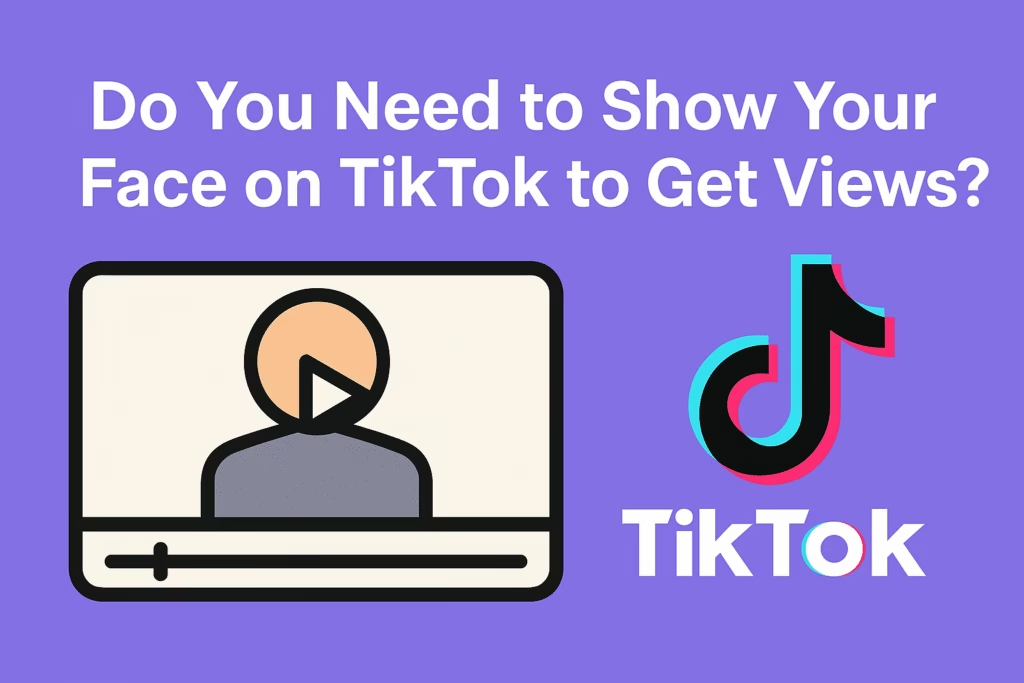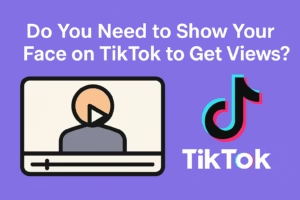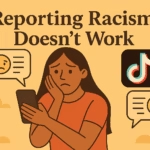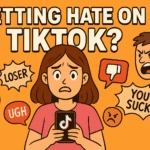You’ve probably noticed it too. Scroll through TikTok and it’s a never-ending stream of pretty faces, dramatic eye contact, and flawless lighting. But what if that’s not your thing? What if you don’t want to be the face of your content?
A TikTok creator recently asked a brutally honest question on Reddit:
“Do you need to show your face on TikTok to get more views?”
It’s a fair fear. New creators feel like they’re stuck in the algorithm’s basement unless they flash a smile at the front of the camera. But guess what? That’s not how TikTok really works.
Let’s break the myth and hand you a faceless creator’s playbook.
TL;DR (Read This First If You’re Scrolling Fast):
-
No, you don’t need to show your face. But faceless creators have to be strategic.
-
Focus on quality: your hook, pacing, visuals, and editing matter more than your jawline.
-
Use smart tools: AI video makers like HeyGen, schedulers like Blaze AI, and hashtag tools like MetaHashtags make faceless content shine.
-
Grab attention fast: make your first 2 seconds count — use text hooks, trending sounds, and pattern disruption.
- Study faceless legends: creators like @theaisurfer and @trywithmark prove personality can win — even without a face.
Why Audience Psychology Still Favors Faces (But You Can Bypass It)
Humans are hardwired to respond to faces. Eye contact triggers trust. Facial expressions convey emotion faster than words. This is why talking-head videos often outperform others, especially when you’re trying to build a personal brand or convey authenticity. People feel like they’re FaceTiming a friend. That’s powerful.
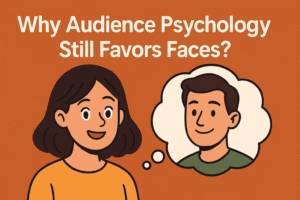
But if you’re not building a personal brand — and you’re more focused on entertainment, education, or niche content — you can sidestep this. Instead of using your face, you can anchor your content around another emotional bridge. That could be:
-
Your voice (authentic narration builds connection)
-
Humor (quick jokes, relatable skits)
-
A strong visual aesthetic (like hypnotic nail art)
-
Mystery or storytelling (build curiosity, delay payoff)
If your video delivers value and feeling, it doesn’t need a face. What matters is: can people feel something by the time they scroll past? If yes, TikTok will reward you.
How Faceless Creators Can Boost Engagement Without Tricks
If you’re not showing your face, you need to give the viewer something else to connect with — and fast. The easiest way to do this is to bake interaction into the video itself. Faceless creators who win don’t just post content — they engineer reactions. That means giving viewers a reason to stay, share, or speak up in the comments. Here’s how:
Use text prompts that feel like conversation starters. Don’t just say “Watch this transformation” — say “Would you try this on your nails or is it too wild?” Suddenly, it’s a question. A choice. And people want to reply. Use captions that spark debate, curiosity, or controversy. If you’re faceless, your captions are your new facial expressions.
Also, lean into pattern disruption. Most TikTok content feels the same. If your video starts with a strange sound, an unexpected close-up, or a jarring question — people pause. That pause tells the algorithm you’re interesting. That’s your win condition.
The TikTok Myth That Pretty People Always Win
It’s easy to believe TikTok favors good-looking creators. Scroll long enough and you’ll see model-tier faces dominating your feed. But this visibility bias hides the truth: there are millions of average-looking, faceless, or behind-the-scenes creators who pull insane numbers without ever appearing on camera. You just don’t notice them because they don’t become influencer-famous — they become algorithmically successful.
The real edge isn’t beauty — it’s clarity, editing, and content strategy. A good-looking person can stare at the camera and get a few thousand views. But that’s not scalable. The creators hitting 6+ million views consistently are the ones who’ve dialed in the formula: strong hooks, scroll-stopping intros, high retention structure, clever CTAs, and great pacing.
Also, beauty is not a niche. If your only asset is being attractive, your audience is fickle. If your value is education, humor, or curiosity — you can win with or without a face. Focus on value delivery. That’s what scales.
Editing and Storytelling Techniques That Replace Facial Presence
When your face isn’t part of the content, your editing becomes your personality. Every cut, transition, and sound effect has to do the emotional heavy lifting. If you want people to stay glued to your video without knowing what you look like, here’s how you make it happen.
Start with your hook — it needs to hit in the first second. Don’t waste time with a slow zoom or logo splash. Open with a bold claim, a weird visual, or a text hook that raises questions instantly. “Watch this nail art transform with one mistake…” works better than “Here’s my nail routine.”
Use jump cuts to keep momentum. No pauses. No filler. Each clip should push the story forward or increase curiosity. If a shot doesn’t earn its spot, cut it.
Stack your storytelling in layers. Use text overlays to guide attention, sound to reinforce emotion, and visuals to keep the viewer guessing. And don’t forget: pacing is everything. Keep viewers slightly on edge, always wondering what’s next.
What the Top Faceless Creators All Have in Common
They know their angle — and they stick to it. The best faceless creators don’t try to be everything. They pick a lane: tutorials, explainers, aesthetic montages, storytelling, product reviews. Then they refine the hell out of it. Consistency builds recognition. Recognition builds trust. And trust builds views over time — even without a face.
They also systematize everything. Posting is not a spontaneous act. It’s a pipeline. They use tools like Blaze AI to schedule, test, and repeat what works. They use MetaHashtags to ride trending tags early. They don’t guess what works — they measure it.
Most of all, they design for strangers. Not fans. Not friends. They structure every video as if the viewer has zero context. Because that’s what TikTok is: cold traffic. If your video makes sense without knowing who you are, it’s scalable. If it relies on personality without familiarity, it dies.
When You Should Show Your Face — And Why It’s Okay If You Don’t
If your goal is personal branding, coaching, or building long-term trust — showing your face can accelerate the process. Humans connect faster when they can see emotion, read body language, and hear voice inflection all at once. It shortens the gap between “stranger on the internet” and “someone I’d buy from.”
But showing your face isn’t a requirement — it’s a tool. And like any tool, it depends on the job. If your niche is aesthetic-driven, tutorial-based, or product-focused (like nail art, AI tutorials, or niche storytelling), your face is optional. What matters more is visual clarity, editing style, and concept originality.
You should show your face only when it adds value. Not because you think you have to. If you’re awkward on camera, it’ll show — and it might hurt retention more than help it. What wins is confidence, not visibility. Use whatever delivery style lets you show up consistently with quality. That’s your real face online.
How to Build a Faceless Brand That Still Feels Personal
A faceless brand doesn’t mean soulless content. You can stay off-camera and still build deep audience loyalty — if you’re intentional. The trick is to develop a signature voice, even if it’s not literal. That voice could come through your captions, your editing style, your music choices, or even your comment replies.
Consistency is the secret sauce. Use the same fonts, color grading, and pacing. Start your videos with the same structure. Pick a recognizable tone — snarky, soothing, hype — and apply it across everything. People start to associate style with identity, even if they never see your face.
You can also inject personality with narration. Talk to the viewer. Be casual. Drop in small jokes or hot takes. When you create a repeatable experience, people start coming back for you, even if they can’t describe who you are. That’s how faceless creators build fandoms.
Final Thoughts: Stop Obsessing Over Visibility, Start Obsessing Over Watchability
Too many new creators waste time worrying about visibility — “Do I need to show my face?” “Will anyone trust me if I’m not on camera?” Wrong focus. The real question is: can your video hold attention for more than three seconds? That’s the battlefield.
TikTok doesn’t reward faces. It rewards watchability. Can you create curiosity fast? Can you deliver something valuable before boredom sets in? That’s what decides whether your video flops or flies. Your face is just a tool. Use it if it helps. Ditch it if it doesn’t.
Obsess over pacing. Over story arcs. Over hook writing. Over editing flow. Over emotional pull. That’s how you win — faceless or not. The best creators treat their videos like tiny puzzles built for strangers. Solve the attention problem, and the algorithm becomes your friend.
That’s the truth no one tells you: people don’t follow faces, they follow feelings. If you can deliver the right one, you’ll never need to show yours.
